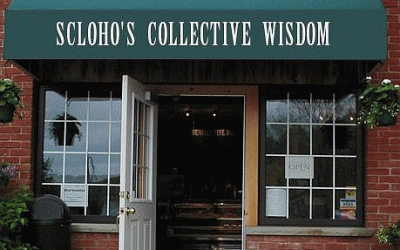We want young people, you know, the ones who have money to spend and are not stuck in their ways to come to our place.That was part of the conversation I had with a couple of business owners in their 40’s recently. Their Mom was in her late 70’s and still active in the family business.But these two brothers were having a hard time understanding who they should be inviting to spend money with them.
ScLoHo’s Collective Wisdom
Radio Advertising with WOWO or Local TV
Are all advertising options equal? Of course not.Is a burger off the dollar menu at your favorite fast food joint equal to the $20 burger you can order for lunch at your local restaurant? Of course not. Today, I am going to do a comparison of advertising on WOWO radio in Fort Wayne with advertising on a local TV station.
You versus Them
Today I am going to share with you a piece of the Consumer Journey that every single consumer encounters before they spend money. They have to decide if they are going to be your customer, or someone else's customer. From your side of the sales counter,...
Radio Advertising is Still A Great Deal in 2019
At the end of last year, I saw a few reports on the state of media and marketing for 2019 and want to share some insight from others again. Because, I can tell you plenty about the success of WOWO advertisers, but how about what others are using radio and...
What’s Old Is New Again: Radio Listening
Over the recent Christmas and New Year's holiday break, I was catching up on unread emails from 2018 and found this gem pertaining to trends for 2019 and beyond that says that radio listenership will be going up in the years ahead. Deloitte...
Sound ADvice on Radio Advertising Success
To kick off the brand new year, I am going to share with you stories of success that business owners from around the country shared last year. These are their stories of how they grew their profits using radio advertising to invite customers to their...
Marketing Ideas for Restaurants
After the big holiday push from November through Christmas time, most restaurants experience a slow down in January, unless you prepare ahead of time. Restaurant News has a great article listing some of the special days and events that you can plan a promotion around...
The TOMA Tale
Years ago, I worked for a group of radio stations that hired Wayne Ens to do research on TOMA in Fort Wayne, Indiana. TOMA is an acronym for Top Of Mind Awareness and if your business doesn't have it with your potential customers, you are living with an unfair...
Everyday is the Best Day
I read a lot. Not as many books as I used to before the internet, but I read all kinds of stuff. I read everyday. I bet you do too. Sometimes I am asked by business people, what is the best day to advertise? Everyday is my usual answer. Recently I was reading an...









